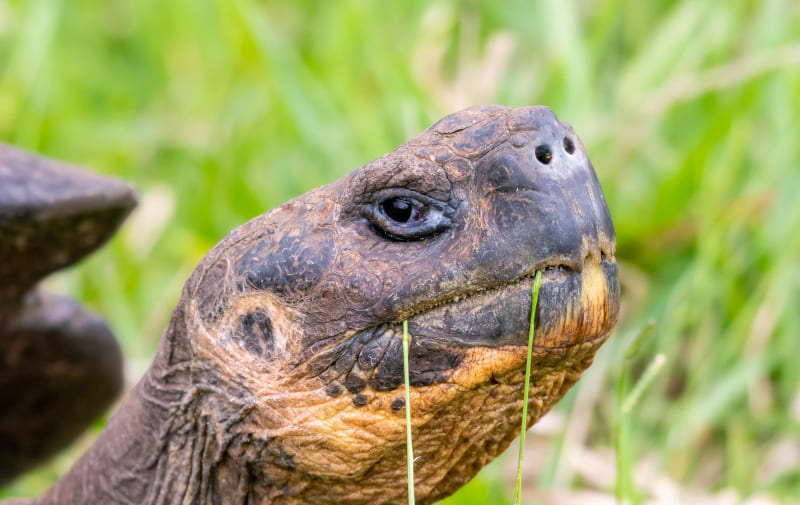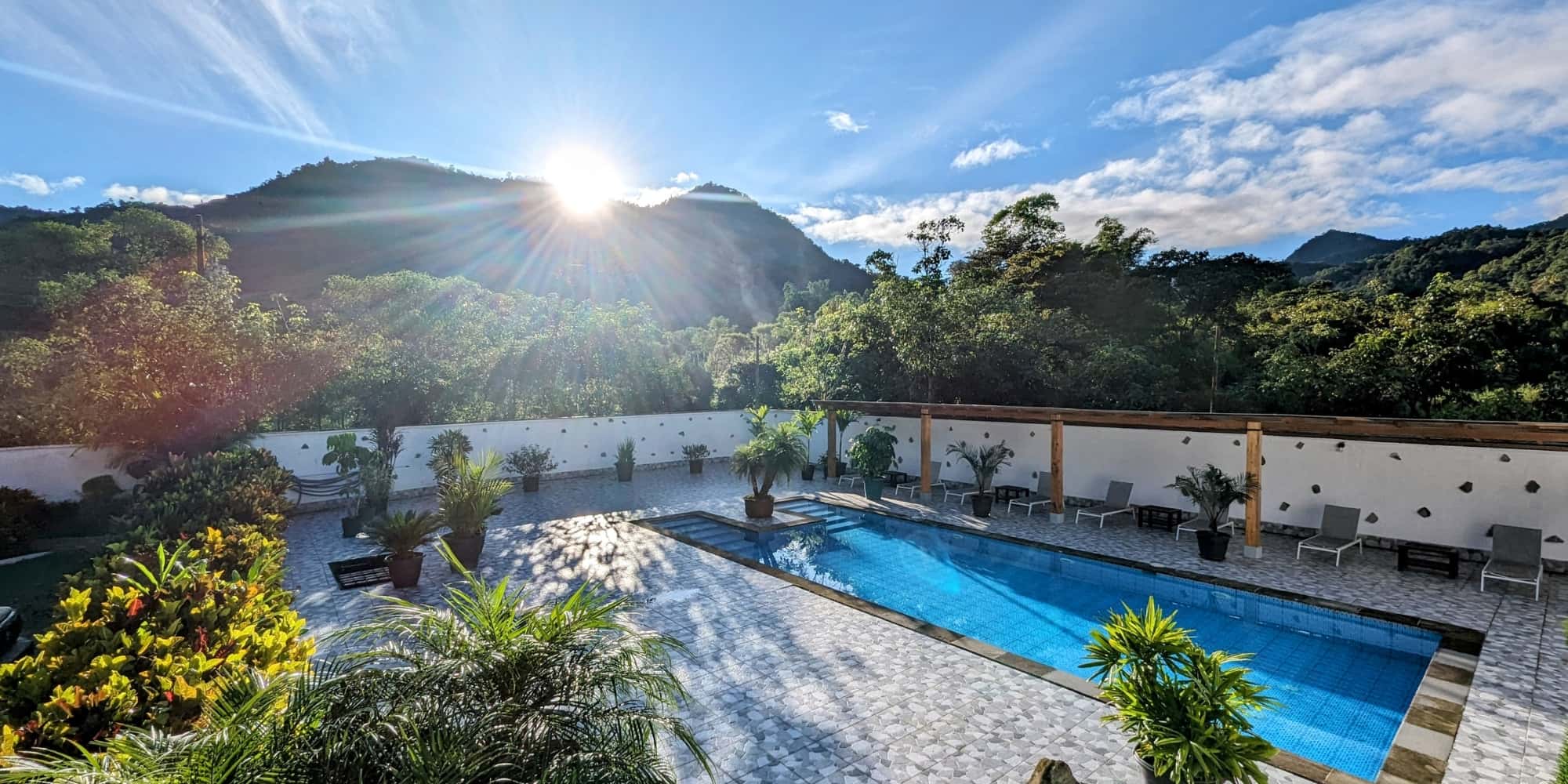David Brito
The Amazon Basin covers almost the entire northern half of the continent South America. The Amazon has by far the world’s largest water fill. It’s with about 7 million km², equivalent to about five percent of the total land area, the largest contiguous landscape area and thus also the second largest contiguous forest on the planet after the boreal forest. The area designated a landscape that is dominated by the huge river system of the Amazon, and thus also includes his 1000 “larger” tributaries.
Amazonia is very huge covering very big area including parts of Ecuador. There are many very interesting places in Ecuadorian Amazonia worth to visit where you can see wonders of nature, many interesting jungle creatures and experince fun participating in various activies. So among many interesting places in Ecuadorian Amazonia we are going to talk about the Yasuni National Park, Cuyabeno Reserve and amazing Ecuadorian city of Tena and its surroundings.
The Yasuni National Park
The Yasuni National Park is a national park in Ecuador with an area of 9,820 km² and a core area of about 5000 km². The National Park lies between the rivers Napo and Curaray Napo and Pastaza in the provinces, 250 km from Quito. The National Park is part of the same river Yasuní, a tributary of the Napo It was established in 1979 reported by the Ecuadorian government and declared in 1989 by the UNESCO Biosphere Reserve.
The Yasuní National Park is of global importance for biodiversity protection. It has intact variety of higher vertebrates, and the impact of the climate change which is already noticeable in this region. Amazon has pushed the park in the interest of many researchers and conservation NGOs.
Within the national park are different indigenous groups who live largely isolated from outside influences. Due to the interests of wood and oil companies, there are ongoing conflicts between different interest groups such as environmentalists, human rights activists, government agencies and commercial exploiters of natural resources.
Cuyabeno Reserve
Cuyabeno Reserve is a tropical rain forest and faunal area protected in Ecuador. The reserve is located in the canton of Putumayo and in the province of Sucumbios and Orellana province. It was founded on 26 July 1979. With an altitude of 200-280 meters and an area of 6 033.8 km2 Reserve Cuyabeno is an important conservation area and an example of the complexity of the Amazon ecosystem.
The reserve is a complex mixture of rivers, lakes and underwater forests. The protected area is characterized by the density of its biodiversity and the interaction and cooperation between the different species living in the area. Its specific geological attributes are the result of sediment and materials transported by rivers from the Andes, mainly Aguarico River, considered a river of living water because of sediment it carries that raise the level and make it navigable throughout the year. Cuyabeno Reserve is considered one of the sites with the densest biodiversity in the world with the Yasuni National Park.
Its 13 lakes, tropical forests spanning 6,100 km2 and its many rivers are home to a rich variety of plants, some of which are endemic to the region. About 12,000 plant species have been identified in the area and found not less than 60 species of orchids. Many plants have medicinal properties that local indigenous communities have been able to use.
Cuyabeno is home to 550 species of birds, over 350 species of fish (including the piranha), a wide variety of reptiles such as caimans, anacondas and river turtles, many varieties of insects and poisonous frogs. Among mammals, we find tapirs, armadillos or pink dolphins of the Amazon. The river system includes the Cuyabeno rivers such as Aguarico and San Miguel and their tributaries. The rainy season is clearly marked from April to July, followed by a mixed rainy season and drought from August to November and a dry season from December to March. The upper part of the reserve is characterized by its flooded or Igapo forest, which is submerged in black water. Water staining is caused by the decomposition of organic matter and by tannic acid deposits.
The upper part of the reserve consists of 14 interconnected lagoons, only one is accessible for tourism. 13 lakes are prohibited and only accessible to local communities and park rangers. The “Great Lake” (2.5 km) was open to visitors and is the most visited.
Tena
Tena is a city of Ecuador and the capital of the province of Napo. It is located 118 km southeast of Quito. That is only 4 hours from Quito, so it’s worth to visit. It’s one of the best tourist destinations in Amazonia where you can experience how is to live surrounded by beautiful, amazing nature and friendly people. Its population was 16,669 inhabitants in 2001. Near city are the most active volcanoes of Ecuador – Sumaco (3900 m), Reventador and Sangay. Located at the confluence of the Tena and Pano rivers, the city boasts great beaches such as Rancho Alegre, Cocha Cementerio or Dos Ríos. Tena has a botanical garden in the city center called the “Amazonian Park”. Excursions for tourists to the deep jungle are available.
Tena is a major commercial and tourist center of the eastern region of Ecuador, the starting point for excursions into the Amazon rainforest. The entrance of the city is dominated by the statue of indigenous Jumandy, who in 1578 led a revolt against the Spaniards. In the city there are several hotels that offer tours for sports such as kayaking and rafting. In the area there are various zoos and parks and canoe trips offered, as in Puerto Misahuallí, with the opportunity to visit some villages of indigenous communities living on the banks of the Rio Napo.
Sumaco is a volcano located on the border of the provinces of Napo and Orellana, near city of Tena. Several rivers originate on the Sumaco, which isn’t close to any inhabited area or any crossable road. His rise is difficult because of the thick vegetation and many challenges, and requires almost a week. Located in the National Park Sumaco Napo Galeras, the volcano is home to varied fauna and flora, including spectacled bear, mountain lions and jaguars.
There are many interesting animals living in the Ecuadorian Amazonia near city of Tena and among them are especially interesting jaguars and the spectacled bear and we are say something about them. Jaguars that live in the rain forest are generally darker than individuals in savannah areas. They are loners who occupy fixed areas of at least 25 to 150 square kilometers, depending on potential prey. Despite heavy body type they can climb very well. Young animals climb more frequently than adult animals. Because of their prey spectrum they are very good swimmers. The Jaguar swim through rivers and over longer distances, a feature that is otherwise only found in the tiger. Investigations using radiometry found that jaguars are also quite active during the day. Nevertheless, spend 40 to 50 percent of the day resting.
The spectacled bear is a predator and the only bear in South America. An adult male animal reaches a length of 190 centimeters and a weight of 130-175 kilograms, and females are considerably smaller and reach about two-thirds of the body length of males and weigh only about 60 to 80 kilograms. Its common name comes from the eye-catching bright face color, otherwise coat is black. They are omnivorous, but feed mainly on plant material, especially of shoots and fruits of bromeliad plants and cactus plants.












 in Mindo Cloud Forest, Ecuador!
in Mindo Cloud Forest, Ecuador!